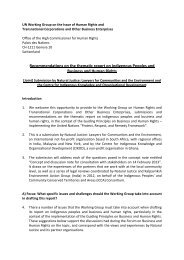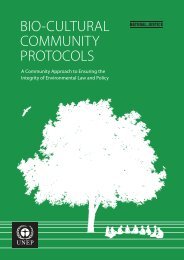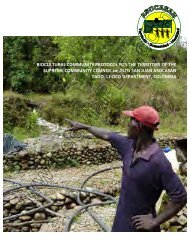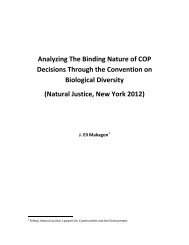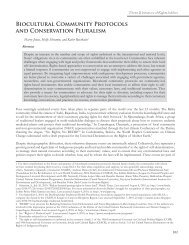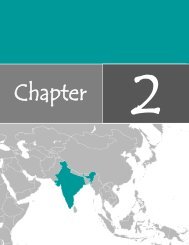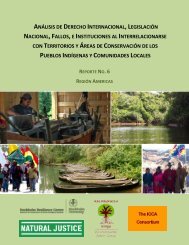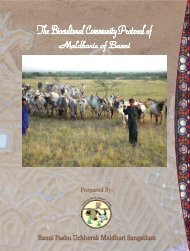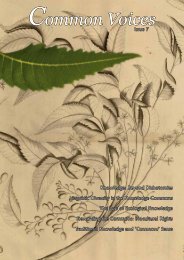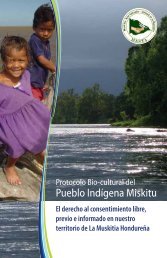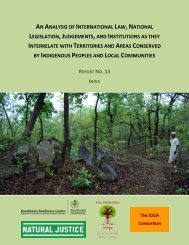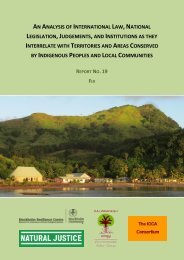English - Natural Justice
English - Natural Justice
English - Natural Justice
Create successful ePaper yourself
Turn your PDF publications into a flip-book with our unique Google optimized e-Paper software.
Reform Policies and Laws to Effectively Protect and Promote TraditionalKnowledge, Cultural Heritage and Customary PracticesThe research shows that states should work with Indigenous peoples and local communitiesto develop culturally appropriate legal regimes that protect their collective rights overtraditional knowledge and cultural heritage, taking into account the specific knowledge andheritage of women. This may include supporting the appropriate documentation, valuationand revitalization of traditional knowledge, languages and customary practices.States should also enact the principle of subsidiarity by decentralizing rights over territoriesand resources to the Indigenous peoples and local communities concerned. Towards thisend, states should consider an overall law or policy on community stewardship of naturalresources that recognizes traditional authorities and customary laws and practices andpromotes integrated ecosystem approaches to governance and management.Ensure Protected Areas Comply with International Rights, Principles andStandardsStates should undertake a full review of national protected area systems with Indigenouspeoples and local communities, NGOs, and research institutions, including of de facto and dejure governance and management arrangements, to identify ways to ensure compliancewith international human rights instruments and related principles and standards forprotected areas. They should also undertake a rigorous evaluation of the impacts ofprotected areas on Indigenous peoples and local communities, especially when overlappingwith or subsuming their territories, and utilize customary or community-based approachesfor preventing and resolving conflicts.States should recognize and respect ICCAs as “effective area-based conservation measures”(as per the CBD’s Aichi Target 11) in their own right without requiring them to fulfillexternally defined requirements or be part of national protected area systems.Inappropriate recognition of ICCAs, including by viewing and valuing them only in terms oftheir contributions to conservation, may pose as many dangers as the imposition of stateprotected areas. Towards this end, states should take responsibility to enact rights-basedapproaches to protected areas, building on international instruments such as UNDRIP,internationally adopted standards and principles such as those emanating from the CBD’sWorking Group on 8(j) and Related Provisions and the Programme of Work on ProtectedAreas, and resolutions and recommendations of the IUCN World Conservation Congressesand World Parks Congresses.Just ConservationAustralia’s terrestrial protected area estate (the National Reserve System) totals about 106million hectares (about 14% of the nation’s total land area), of which about 26.5 millionhectares are contributed by IPAs. This large and growing protected area network representsboth a challenge and an opportunity for Indigenous peoples’ livelihoods and connections toCountry. For many Indigenous peoples, protected areas have alienated them from theirtraditional estates as part of the wider colonial system that led to dispossession andcatastrophic cultural changes. For an increasing number, however, protected areas presentan opportunity to strengthen culture and identity through employment and governancepartnerships that are valued by the Indigenous community and wider Australian society



